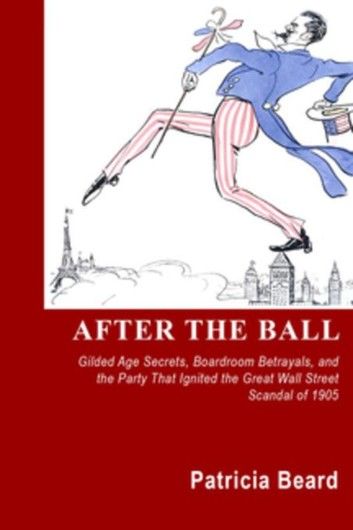| FindBook |
有 1 項符合
After the Ball的圖書 |
 |
After the Ball 作者:Patricia Beard 出版社:Sanford J. Greenburger Associates 出版日期:2014-03-25 語言:英文 |
| 圖書館借閱 |
| 國家圖書館 | 全國圖書書目資訊網 | 國立公共資訊圖書館 | 電子書服務平台 | MetaCat 跨館整合查詢 |
| 臺北市立圖書館 | 新北市立圖書館 | 基隆市公共圖書館 | 桃園市立圖書館 | 新竹縣公共圖書館 |
| 苗栗縣立圖書館 | 臺中市立圖書館 | 彰化縣公共圖書館 | 南投縣文化局 | 雲林縣公共圖書館 |
| 嘉義縣圖書館 | 臺南市立圖書館 | 高雄市立圖書館 | 屏東縣公共圖書館 | 宜蘭縣公共圖書館 |
| 花蓮縣文化局 | 臺東縣文化處 |
|
|
圖書介紹 - 資料來源:樂天KOBO 評分:
圖書名稱:After the Ball
After the Ball is that rare true story that reads like an epic novel, a sweeping chronicle of an era, and an intimate account of the hope and betrayal of a son whose father gave him everything—except the training to find his way in territory ruled by the rapacious.
James Hazen Hyde was twenty-three in 1899 when he inherited the majority shares in the billion-dollar Equitable Life Assurance Society. Only five years later, he fell from grace in a Wall Street scandal that obsessed the nation and commanded 115 front-page articles in the New York Times.
Hyde was intelligent, cultured, and ambitious, but he was no match for an older generation that had mapped the backstreets of high finance. Vying to control the Equitable’s vast investment pool, the most famous financiers and industrialists of the era—among them E.H. Harriman, Henry Clay Frick, and J.P. Morgan—put Hyde on forty-eight boards and included him in deals that shook Wall Street. And then, at the pinnacle of social success, he made a fatal miscalculation.
On the last night of January 1905, James Hyde held a fabulously flamboyant, eighteenth-century Versailles-themed costume ball. His enemies used the party as the hook to hang him on, claiming that he was too frivolous to run a company dedicated to protecting widows and orphans; and spread the rumor that he had spent two hundred thousand dollars to Equitable money on a night’s entertainment. By the time a government investigation established that Hyde had paid the bills himself, his reputation was ruined.
James Hazen Hyde was twenty-three in 1899 when he inherited the majority shares in the billion-dollar Equitable Life Assurance Society. Only five years later, he fell from grace in a Wall Street scandal that obsessed the nation and commanded 115 front-page articles in the New York Times.
Hyde was intelligent, cultured, and ambitious, but he was no match for an older generation that had mapped the backstreets of high finance. Vying to control the Equitable’s vast investment pool, the most famous financiers and industrialists of the era—among them E.H. Harriman, Henry Clay Frick, and J.P. Morgan—put Hyde on forty-eight boards and included him in deals that shook Wall Street. And then, at the pinnacle of social success, he made a fatal miscalculation.
On the last night of January 1905, James Hyde held a fabulously flamboyant, eighteenth-century Versailles-themed costume ball. His enemies used the party as the hook to hang him on, claiming that he was too frivolous to run a company dedicated to protecting widows and orphans; and spread the rumor that he had spent two hundred thousand dollars to Equitable money on a night’s entertainment. By the time a government investigation established that Hyde had paid the bills himself, his reputation was ruined.
|











